The Vintage Edition
A celebration of all things vintage: inspiration, decoration and interviews with vintage collectors and shopkeepers Emily Attrill from Straw London & Kentaro Poteliakhoff from Rooms.
Hello and welcome! There’s been a surge of new followers recently so what better time to celebrate six months of writing on Substack with a bumper vintage post and exclusive interviews with collectors and stylists Emily Attrill from Straw London & Kentaro Poteliakhoff from Rooms. Since last summer you, my lovely subscribers, have liked, commented on and supported these newsletters and special editions. Thank you, it really is great to see you here.
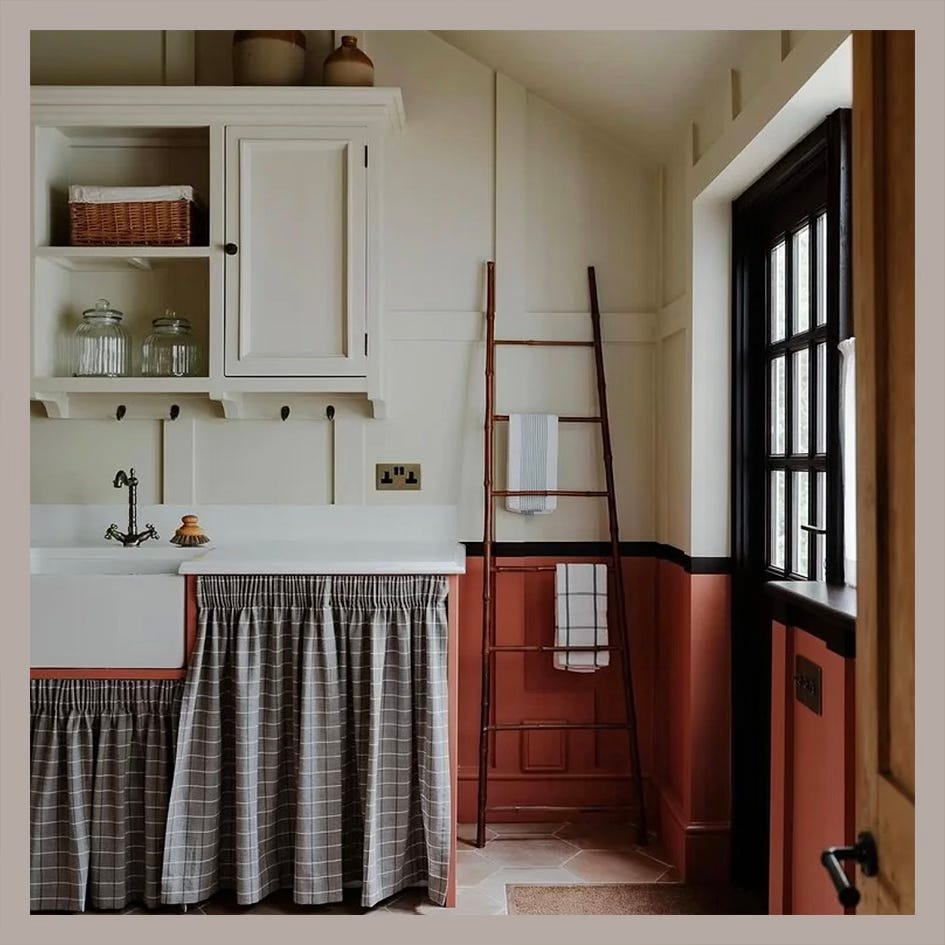
How to Decorate Your Vintage Home: Green & Yellow
For these new features on decorating I’m looking at ways to create complementary colour palettes that work well with reclaimed furniture and homewares. Inspired by a pair of vintage wall lights, a serendipitous find whilst hunting for paintings, I was drawn to the colour combinations: green, yellow and white. The pretty metalwork daisies felt so fresh and springlike and it got me thinking. The right shade of green can look very effective in period homes, as can a mustard yellow or ochre wall and in small amounts the two colours complement each other well.
Designers Guild have a knack of creating retro inspired patterns and paints and this linen, top left, from their Kawana Terracotta collection caught my eye.
The paint, top right, is Invisible Green from Edward Bulmer and works well with dark and antique furniture and Little Greene have created the uplifting Sage & Onions, bottom left, which looks very striking against a window wall.

If you’re looking for a refresh but aren’t a big fan of green try a warm mustard or slightly desaturated ochre like this Pimlico paint from Mylands London which I used a couple of years ago, first image middle. The warmth added a much needed lift along a north facing feature wall, at the back of the shop and looked attractive hung with antique plates and paintings. The paint, bottom right is Claybrook’s Lemon Squeezy - a lovely zingy paint but without the harsh acidic tone sometimes found in citrus yellows. For Bedrooms add a splash of spring green with bed linen like the organic cotton set from Designers Guild, central image.
Vintage Collector: Emily Attrill from Straw London
Emily’s background in fashion and styling has helped create a beautifully curated boutique for her range of pre-loved baskets, hand thrown ceramics and vintage inspired clothing. The shop’s interior is a scene that conjures up images of a cosy farmhouse kitchen where homemade objects were lovingly crafted for everyday use. Last weekend I caught up with Emily to talk shop, interior design and her plans for the coming season.
Straw London came about seven years ago when Emily’s collection of straw bags and vintage wicker baskets began to take over her home and she made the decision to turn her hobby into a business.
“I love them,” she says of the baskets, “I source them all and give names to each and every one.” With names like Ava, Constance, Sylvie and Rose the current stock adorns the interior of the Columbia Road shop - simply decorated in a warm minimalist style.
Her home, which she shares with husband Hugo and baby Cosmo, is a rented Victorian house in east London and which she tells me is decorated in a style similar to the shop. Pared back wooden floors, pale walls and uncluttered rooms create a feeling of space. “You need that starkness against vintage furniture,” she says of the neutral colour palettes and natural materials.
Organic, handmade, unadorned yet tastefully streamlined products such as Straw’s own terracotta range and their creamware ceramics - inspired by a 1930s design - are just some of the homewares that Emily and Hugo sell alongside the vintage pieces. You’ll also find their range of cute gingham babywear and for spring / summer Straw are set to launch a women’s daywear line, to follow on from the successful nightwear, as well as adding to their terracotta designs and vintage basket collection.
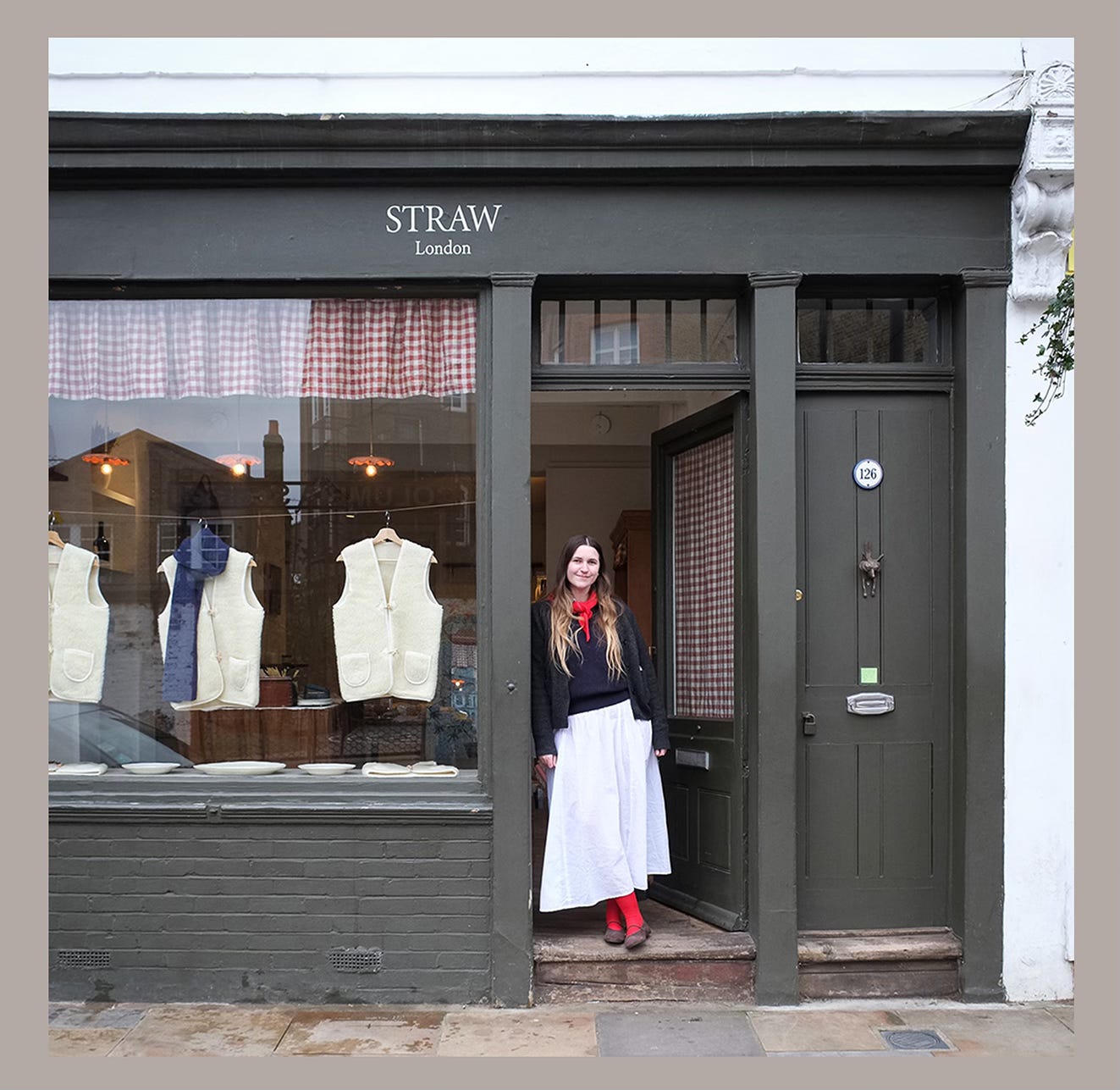
Emily’s decorating style: Use earthy colour palettes and subtle organic textures such as wool, stone and wood to create a sense of calm and harmony.
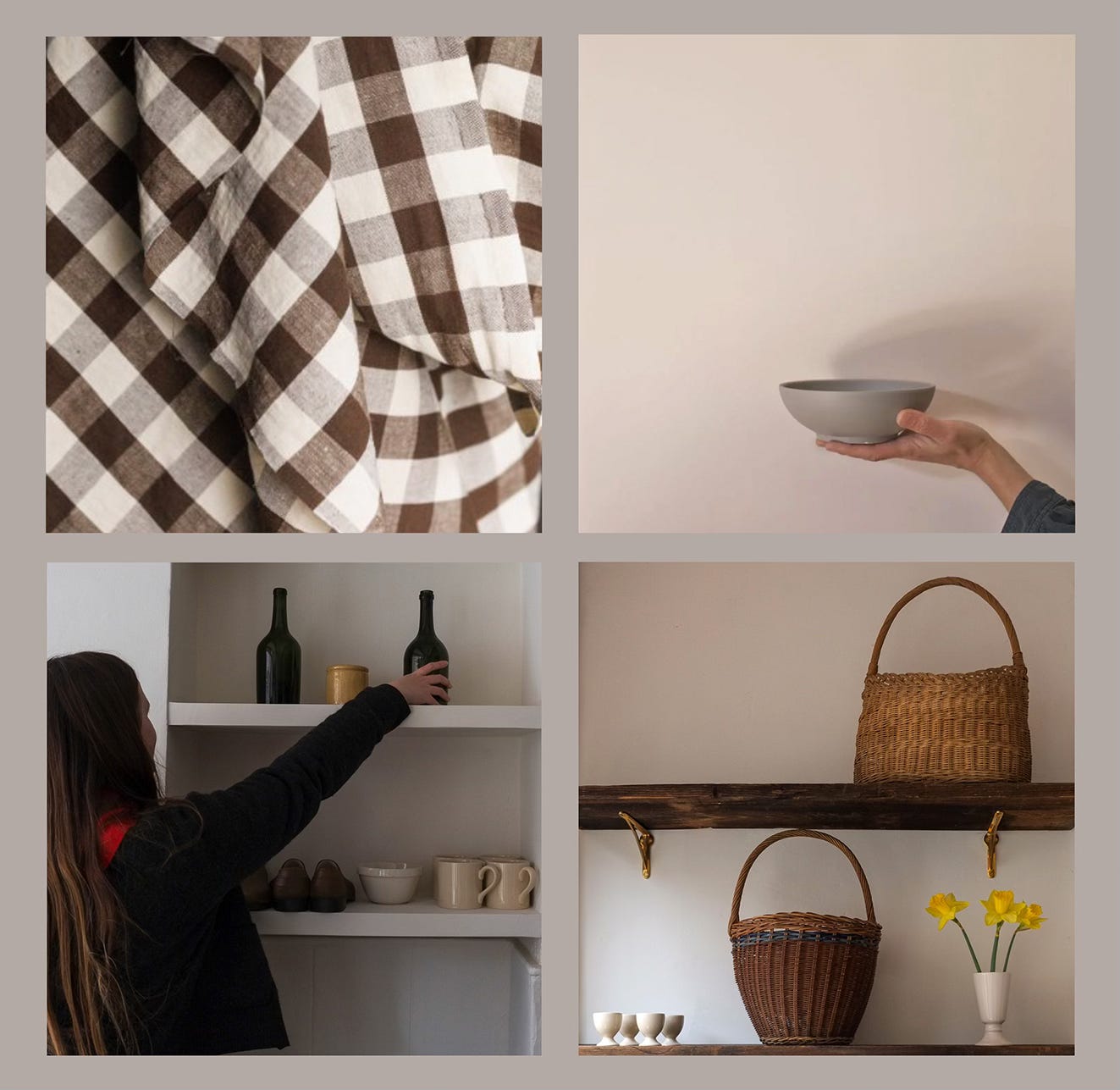
How to Look After Vintage Tableware
If you collect vintage homewares chances are your kitchen cupboards hold a few reclaimed plates, jugs, cake stands, cups or glasses. Mine do and I’m mindful that, as with all second hand crockery, it’s good practice to keep the collections looking as good as possible for as long as possible.
I have a set of Art Deco French plates that only come out at Christmas or on special occasions. They sit on open shelves in my kitchen, prone to dust and grease, so I regularly wash them by hand and check for tiny cracks and splits in the glaze, known as crazing. When plates start to crack along the glaze they trap mould and bacteria and shouldn’t be used for food but there’s no reason to get rid of them; they can still be enjoyed and used for decoration.
When buying vintage glassware check for knocks and chips by running your finger gently along the top. Hold the cup of the glass to the light and check for hairline cracks. I have several sturdy pieces of glassware that quite happily go in the dishwasher but it’s good policy to hand wash fragile, engraved or antique glassware. Cut glass should always be washed by hand, rather than dishwasher, to prevent the crystal turning cloudy from heat damage and detergent. The same goes for vintage cutlery - always best to hand wash.
I see a lot of antique jugs and bowls, especially French dairy bowls and pitchers, that are too blemished to serve food or drink but the aged patina is often the most appealing feature. Use oversized bowls to add texture to a room - they make great decorative items and fill jugs with flowers.
Look after decorative pieces and clean regularily with a dry cloth to prevent build up of dirt. Tea stains and dirty marks inside coffee pots and tea cups can easily be removed with products such as Bar Keepers Friend or baking soda. Recipe: mix two to three teaspoons of baking soda with water to form a paste, apply to the tarnished plate or cup and gently rub the affected area with a soft cloth or old toothbrush. Rinse thoroughly with warm water and dry.
Vintage Collector: Kentaro Poteliakhoff
Fashion assistant turned shopkeeper, Kentaro Poteliakhoff, has turned collecting into a living artwork and filled his four storey London home with vintage finds and antique treasure. Brightly decorated rooms are filled to the brim with colour, pattern-clash fabrics, mismatched rugs and vintage homewares which he lovingly refers to as ‘curated clutter’.
Kentaro’s wide-ranging interests extend to French antiques, mid-century modern, colourful kitsch and vintage Japanese. His home reflects his love of collecting and everything from dolls houses, 1970s furniture, antique paintings and ceramic ornaments are added to create maximum colour and impact.

Kentaro worked for Isabella Blow after an art school degree and says his time in the fashion industry helped fuel an obsession with colour and kitsch. His east London vintage shop Rooms is an extension of his love for pre-loved and decorative antiques. “When I opened Rooms I wanted to create a place that offered style inspiration as well as a wide choice of antiques and mid-century pieces,” says Kentaro of the ever changing collections and fun element that both his home and the shop have in abundance.
Get the look: Use pink, orange, tangerine or saffron to create a warm, lively feel for walls. Add green and gold with framed antique flower and landscape paintings and hand decorated, mid-century studio pottery.
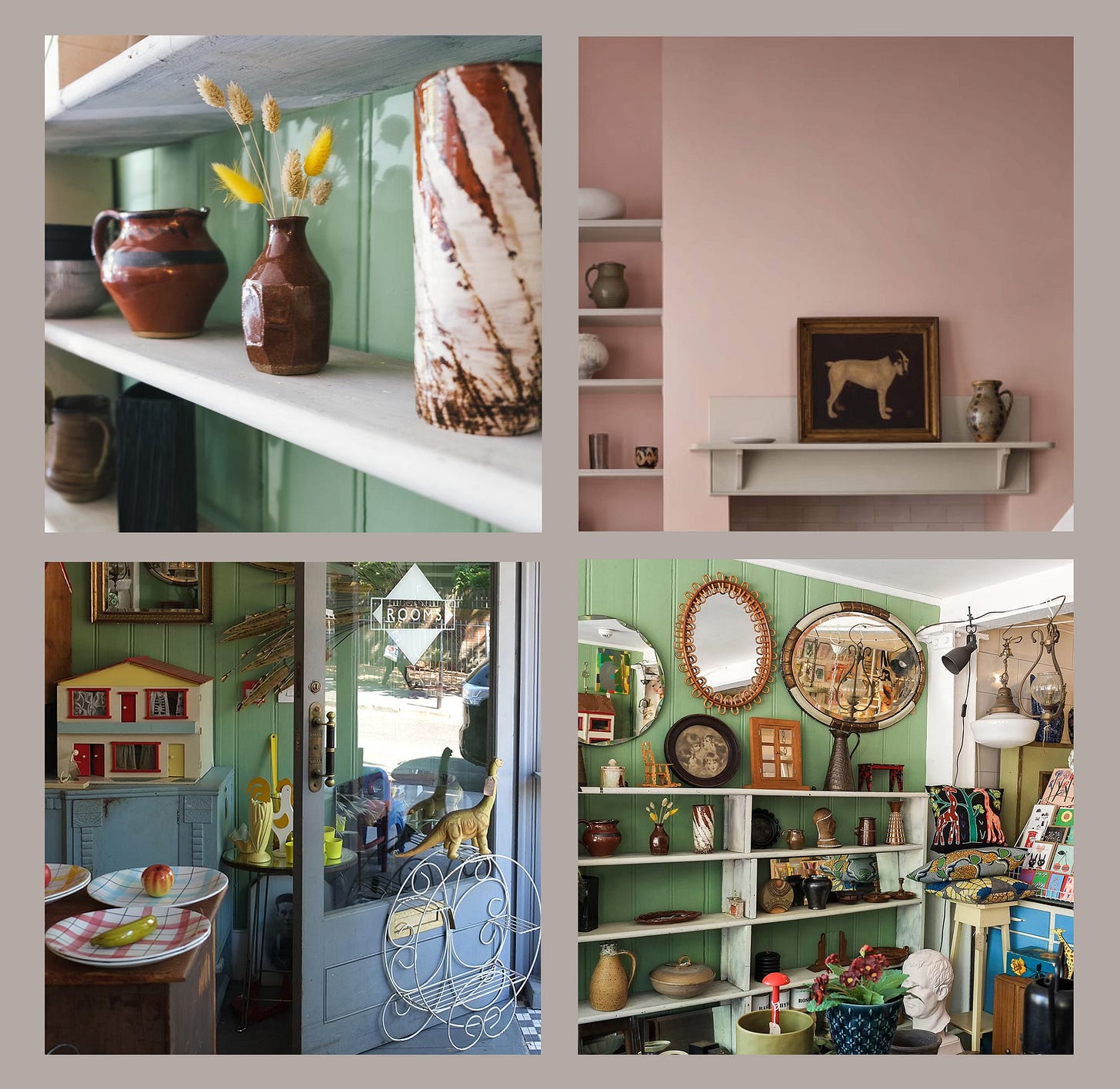
How to Hang Pictures & Prints
Comments have come in lately asking what I use to hang unframed prints and pictures. With paper prints it’s important to handle them carefully, especially if they’re particularly delicate - antique engravings are often printed onto very thin paper. I’ve always used Washi tape for vintage prints which is a low-tack paper tape. I make a small loop of tape for the back of the artwork and place gently on the wall. The tape won’t affect painted walls and if you’re careful it shouldn’t damage your prints.
To hang unframed canvas paintings I generally use a small tack or nail knocked directly into the wall. For plates and paintings on board these self adhesive plate discs are perfect as they come with a small hook. You could also try these wire plate hooks which come in different sizes and are great for heavier plates.
Thank you for reading this week’s post, your support means a great deal. And it’s always good to hear from you so please do leave a comment below or ‘like’ by clicking on the little heart. Until next time, bye for now,







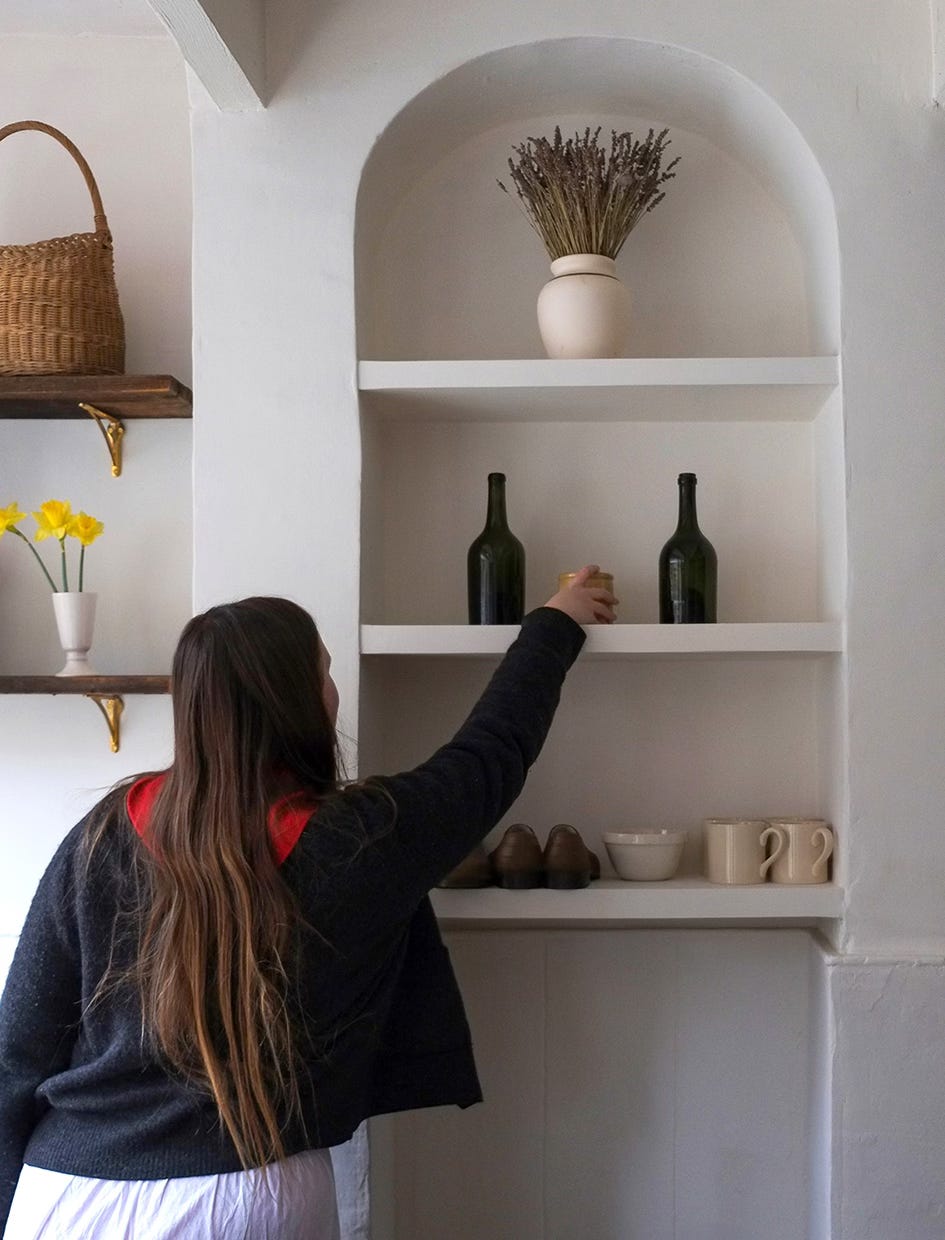


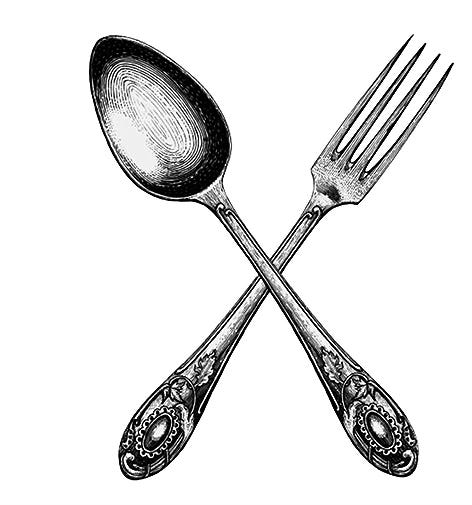
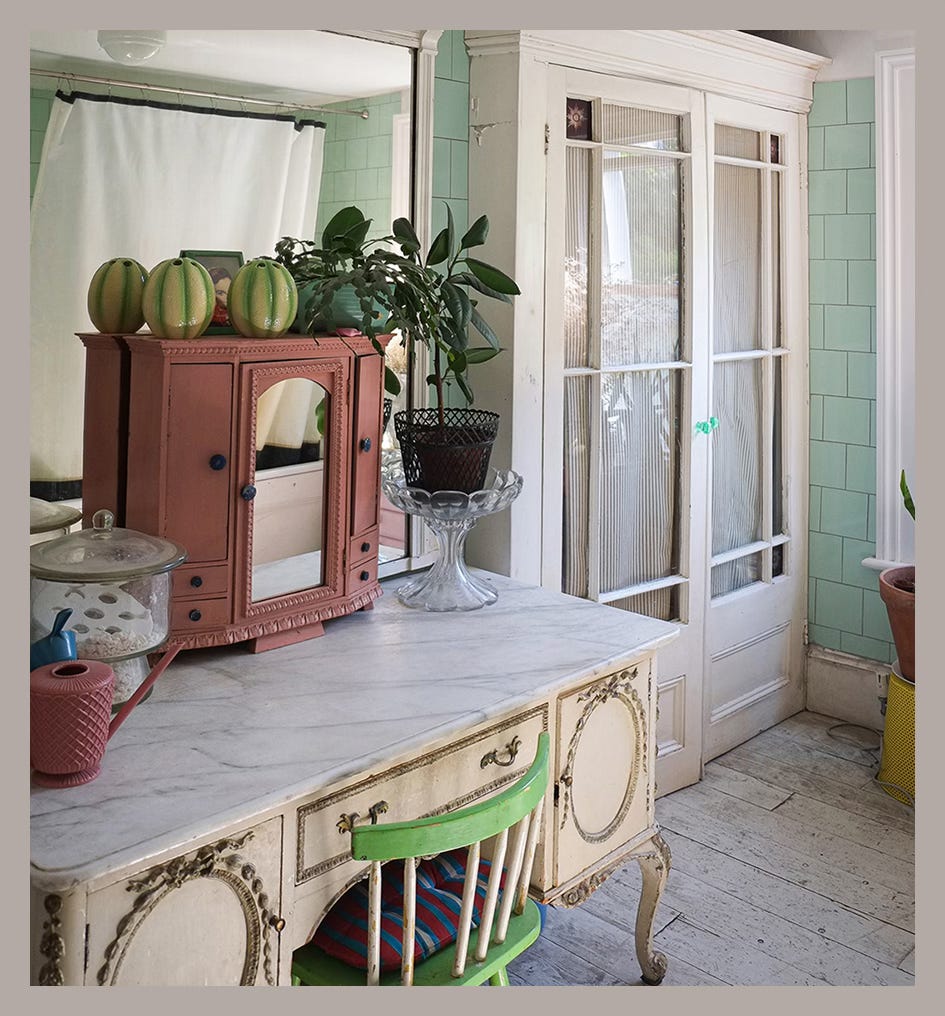
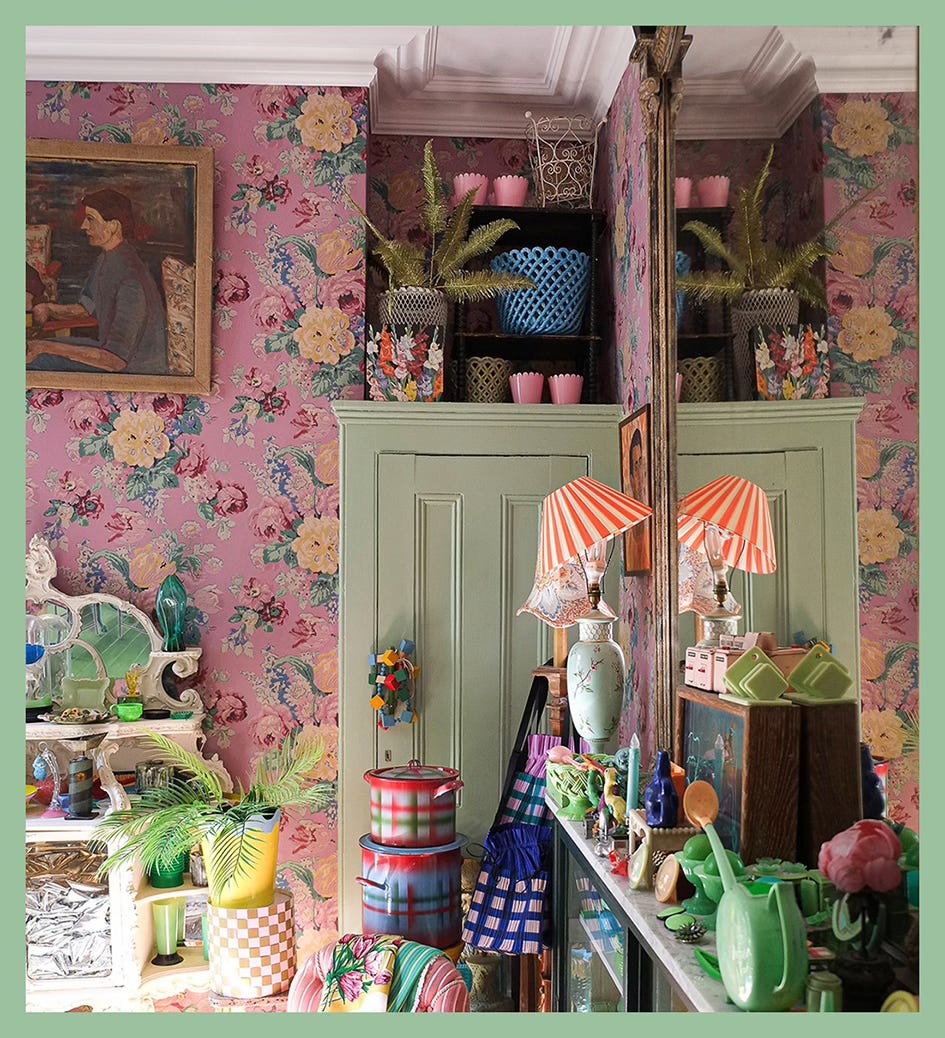

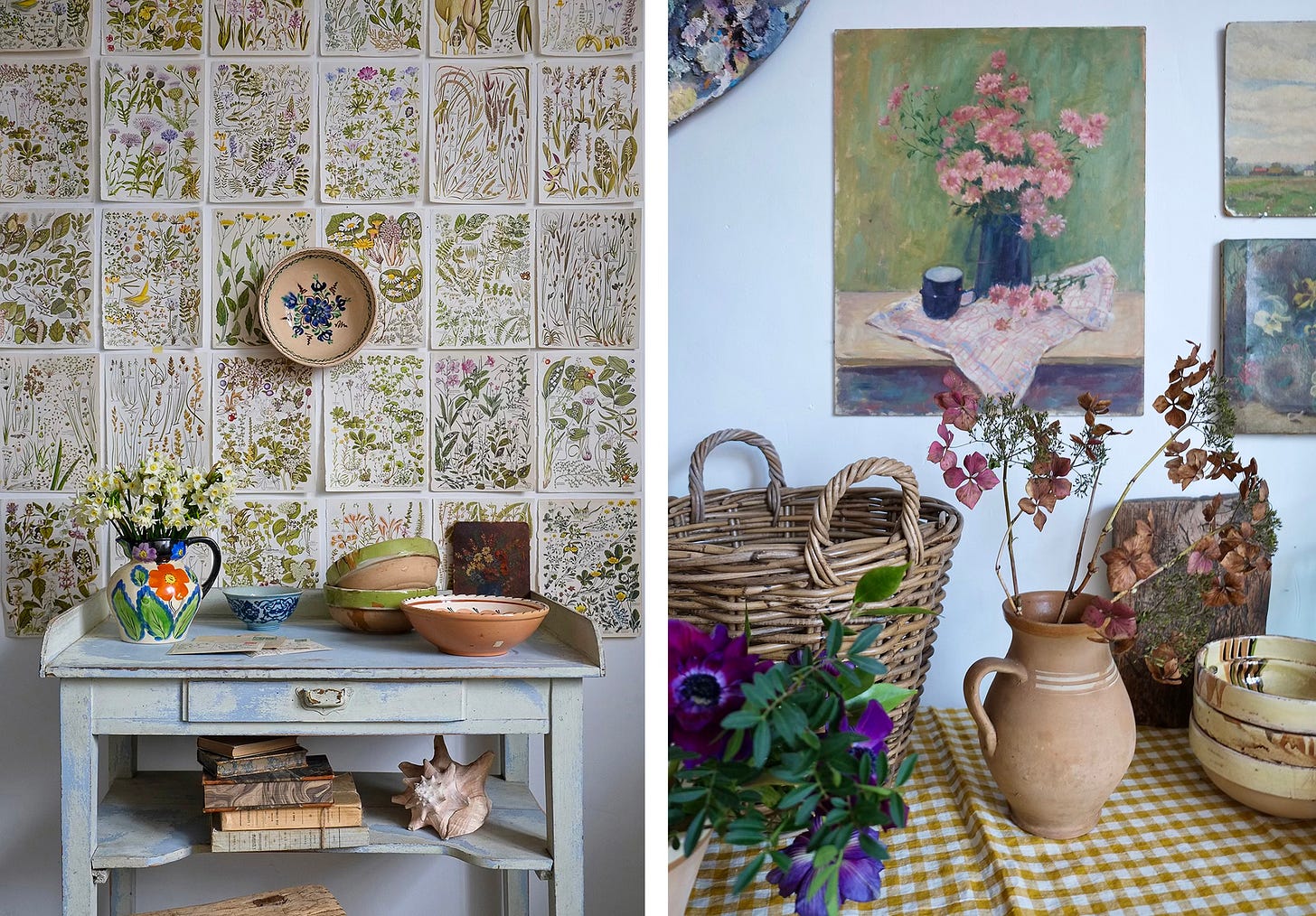

Fascinating as always! x
Thank you, Julia. Pleased to hear that you enjoyed the post & you hopefully got something out of it. Have a great weekend, Michelle x